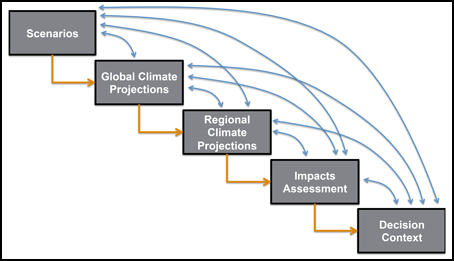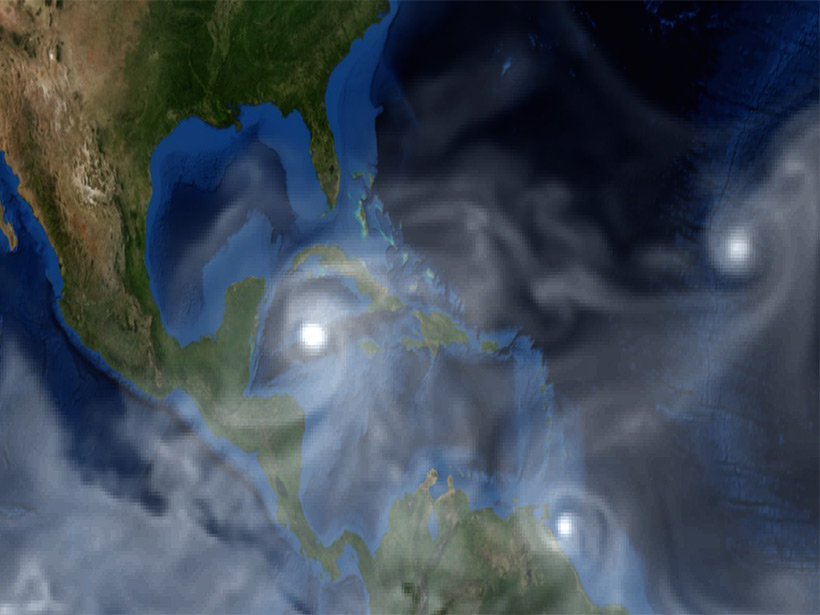The need for regional- and local-scale climate information is increasing rapidly as decision makers seek to anticipate and manage a variety of context-specific climate risks over the next several decades. However, global climate models are not developed with these user needs in mind, and they typically operate at resolutions that are too coarse to provide information that could be used to support regional and local decisions.
Emerging high-resolution global modeling capabilities and statistical or dynamical downscaling techniques have the potential to fill this need, but their relative strengths and weaknesses have not been systematically evaluated. Moreover, it is not clear which decision contexts require high-resolution information or how best to evaluate and communicate the degree to which relevant features of the climate are reliably represented in high-resolution data products.
The Aspen Global Change Institute hosted a weeklong workshop that sought to clarify the gaps in climate data provision and use.
The Aspen Global Change Institute hosted a weeklong workshop in August 2015 that sought to clarify the gaps in climate data provision and use. The overarching purpose of the workshop was to consider how well emerging high-resolution model capabilities and downscaling techniques advance basic scientific understanding of physical processes, support climate impacts assessment, and inform decisions. The roster of the workshop included physical scientists, experts on sector-specific impacts and adaptation, practitioners in various decision contexts, and social scientists studying the connection between science and decision making.

Participants explored several existing and potential cases of high-resolution-information use for climate impacts assessment and risk management. These cases centered on four sectors: water resources, public health, infrastructure planning, and managed lands. Cross-cutting themes included the twin challenges of uncertainty quantification and model skill evaluation, as well as the role of institutions in facilitating the effective examination of both user needs and data credibility (Figure 1).
We identified numerous instances where skillful projections at high resolution could add critical value to impacts assessment and planning activities. These can be categorized into situations in which one or more of the following criteria hold:
- The relevant climate phenomena depend upon fine-scale physical processes that are difficult to parameterize in coarse-resolution models (e.g., hurricanes, topographically forced precipitation, extreme precipitation).
- The decision context involves planning at fine scales in complex terrain with diverse microclimates (e.g., conservation planning in coastal or mountainous terrain, extreme heat preparedness in complex urban environments).
- Impact models operate at fine spatial scales (e.g., hydrological models in complex terrain).
This exploration stimulated a rich discussion about sustained partnerships and novel institutional arrangements among modelers, impacts researchers, and practitioners who must expand and improve the use of all kinds of climate model information. Participants identified the necessity of effectively communicating uncertainty characteristics, caveats, and trade-offs among different modeling approaches to support “informed consumption” of information and its appropriate incorporation into sector- and region-specific analyses.
This workshop was hosted by the Aspen Global Change Institute with support from the U.S. Department of Energy, Office of Science; NASA; and the Heising-Simons Foundation. The Calibrated and Systematic Characterization, Attribution, and Detection of Extremes (CASCADE) project is supported by the director, Office of Science, Office of Biological and Environmental Research, of the U.S. Department of Energy Regional and Global Climate Modeling Program and uses resources of the National Energy Research Scientific Computing Center, also supported by the Office of Science of the U.S. Department of Energy under contract DE-AC02-05CH11231.
—Andrew Jones, Lawrence Berkeley National Laboratory, Berkeley, Calif.; email: [email protected]; Katherine Calvin, Pacific Northwest National Laboratory, College Park, Md.; and Jean-François Lamarque, National Center for Atmospheric Research, Boulder, Colo.
Citation: Jones, A., K. Calvin, and J.-F. Lamarque (2016), Climate modeling with decision makers in mind, Eos, 97, doi:10.1029/2016EO051111. Published on 27 April 2016.
Text © 2016. The authors. CC BY-NC 3.0
Except where otherwise noted, images are subject to copyright. Any reuse without express permission from the copyright owner is prohibited.

